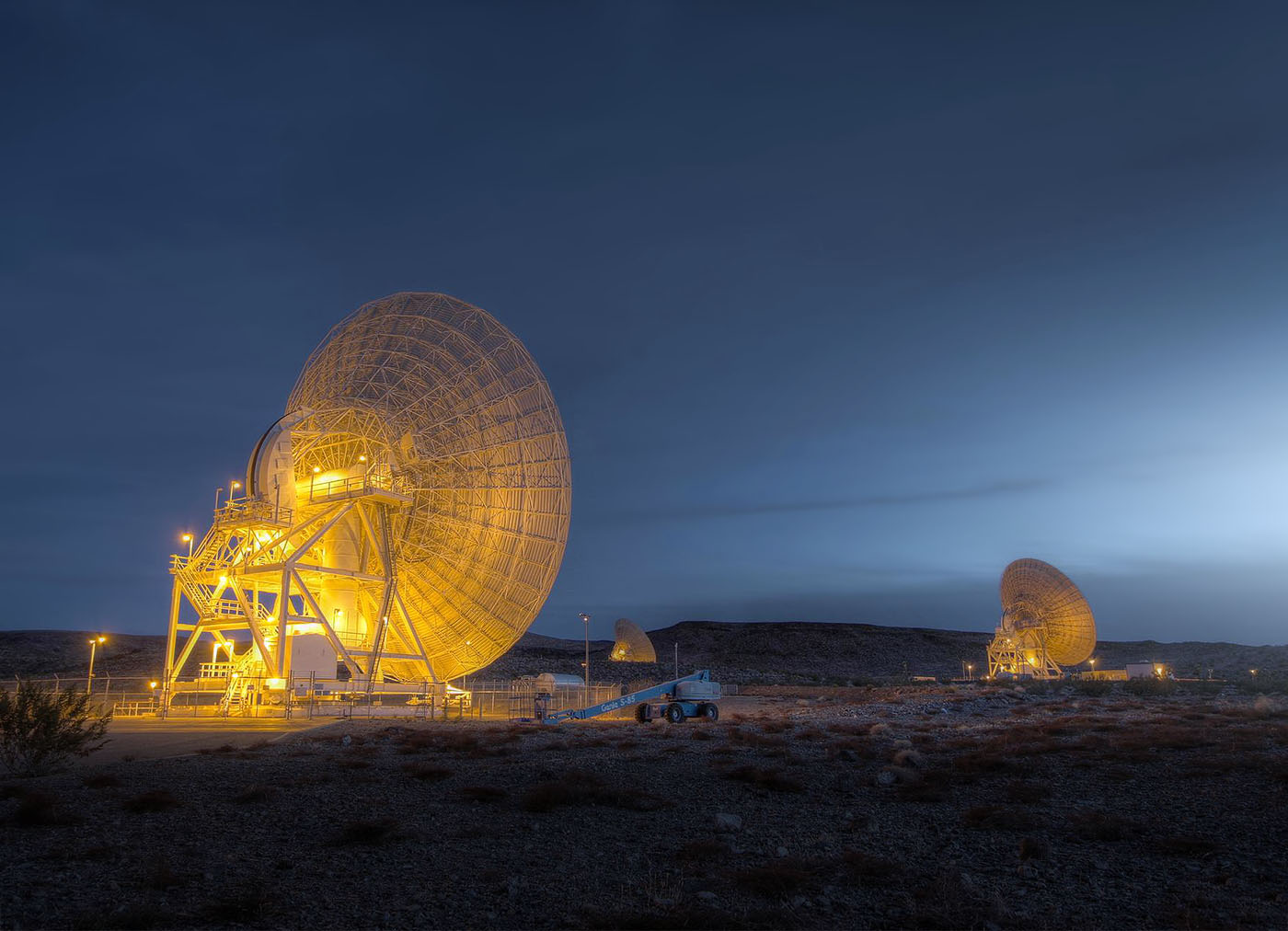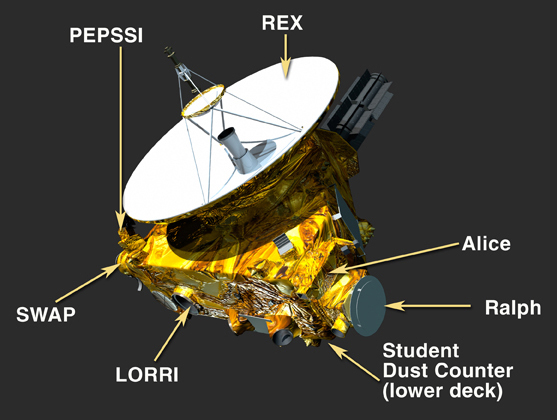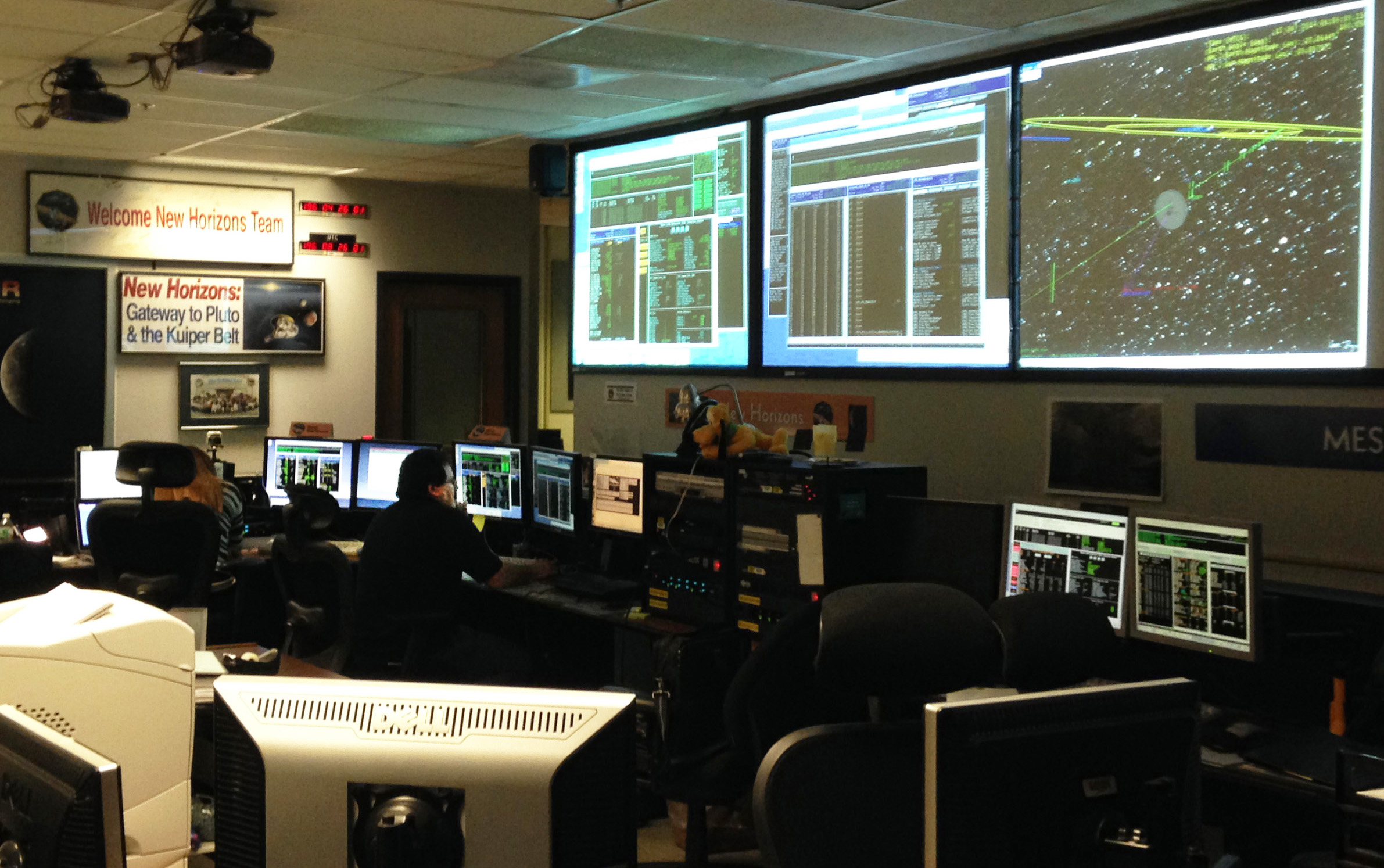New Horizons is on a one-way journey to the Kuiper Belt and beyond. Unlike missions that return to Earth, New Horizons sends back all of its data using a radio transmitter and its 83-inch (2.1-meter) diameter radio antenna. It receives commands over this link, and returns both science data and information on the spacecraft's temperature and power.

All commands sent to the New Horizons spacecraft must first pass a rigorous development and review process to ensure the safety of the spacecraft. The science team will work closely with the instrument mission operations and spacecraft teams to develop the commands that trigger New Horizons' scientific activity. After the command sequences are tested on the ground, they will be sent by the New Horizons Mission Operations Center at the Johns Hopkins University Applied Physics Laboratory (APL) in Laurel, Maryland, to NASA's Deep Space Network (DSN), which is operated and managed by the Jet Propulsion Laboratory in Pasadena, California.

Usually, New Horizons must be oriented in a particular direction to take data with its scientific instruments. For example, its various telescopes must be accurately pointed at a specific target (such as a location on the surface of Pluto). New Horizons has an advanced Guidance and Control (G&C) system for determining its orientation. An Inertial Measurement Unit (IMU), which is a sophisticated gyroscope, provides relatively coarse positional information and keeps the spacecraft stable. Star-tracker cameras employing charge-coupled devices (CCDs) image the sky, and the positions of the detected stars are used to accurately determine the orientation of the spacecraft. The star tracker feeds star-position information to the G&C computer, which compares the observed position to the commanded position. If the difference is outside some predetermined tolerance, small hydrazine thrusters will fire to re-orient the spacecraft to the desired position.
The thrusters provide the only mechanism for maneuvering the New Horizons spacecraft, and the amount of hydrazine thruster fuel is carefully watched to ensure that the mission's scientific objectives are fulfilled. Besides the small thrusters that are used to fine-point the spacecraft, thrusters that are approximately five times more powerful are used during trajectory correction maneuvers (TCMs) that keep New Horizons on the proper path to its targets.

New Horizons carries seven scientific instruments, which collect several types of data. (The instrument names and main functions are described in the science payload section) As an instrument makes an observation, data is transferred to a solid-state recorder (similar to a flash memory card for a digital camera), where they are compressed (if necessary), reformatted and transmitted to Earth through the spacecraft's radio telecommunications system.
A major challenge for the New Horizons mission is the relatively low "downlink" rate at which data can be transmitted to Earth, especially when you compare it to rates now common for high-speed Internet surfers.
During the Jupiter flyby in February 2007, New Horizons sent data home at about 38 kilobits per second (kbps), which is slightly slower than the transmission speed was for acoustic computer modems which operated over telephone lines. The average downlink rate after New Horizons passed Pluto (and sent the bulk of its encounter data back to Earth) was approximately 2,000 bits per second, a rate the spacecraft achieved by downlinking with both of its transmitters through NASA's largest antennas. Even then, it took until late 2016 to bring down all the encounter data stored on the spacecraft's recorders.
Since NASA's Deep Space Network has to track other missions besides New Horizons, the team produced a lossy compressed browse data set that could be sent down more quickly. The browse dataset was downlinked before the end of 2015; the complete dataset came down after the browse dataset.

Data received on Earth through the Deep Space Network is sent to the New Horizons Mission Operations Center at APL, where data is "unpacked" and stored. The mission operations and instrument teams scour the engineering data for performance trend information, while science data is copied to the Science Operations Center at the Southwest Research Institute in Boulder, Colorado. At the Science Ops Center, data passes through "pipeline" software that converts the data from instrumental units to scientific units, based on calibration data obtained for each instrument. Both the raw and calibrated data files are formatted for New Horizons science team members to analyze. Both the raw and calibrated data, along with various ancillary files (such as documents describing the pipeline process or the science instruments) are archived at the Small Bodies Node of NASA's Planetary Data System.